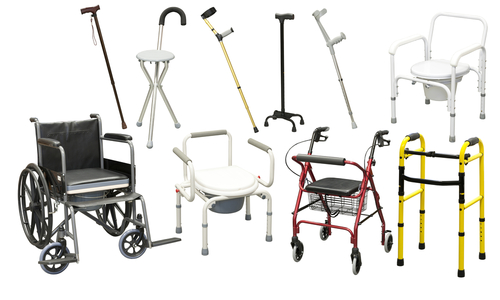Quick Link: Guideline | Gap Assessment | Implementation

Class 1 Medical Devices under EU MDR
EU MDR Implementation Guide for Class 1 medical devices:
Below you will find a step-by-step implementation guide with regards to the new medical device regulation (MDR EU2017/745). Our guide is simple to understand and will allow you to save time and money when implementing the new regulation.
(Note: This guide should not be considered as a recommendation, it’s just based on our own experiences and on the information from MDCG 2019-15. Please do your own research.)

Achieve MDR compliance in 8 steps:
1. Step
Check and confirm that the product is a medical device:
Go to article 2(1) to evaluate if your product is a medical device based on the intended purpose and document the outcome in the technical documentation. Or use our MDR Classification Checklist which helps to guide you through all the steps.
In the case of accessories to medical devices, despite not being medical devices per se, they are covered by MDR provisions and fall under the term “device” in the meaning of the MDR. However, accessories to devices covered by the MDR by virtue of its Annex XVI are not covered by the MDR.
For borderline products where such a determination could be difficult, please consult primarily the information available on the European Commission. [Link to page]
Also very helpful are the following manual and MDCG documents.
- Manual on borderline and classification under Regulations (EU) 2017/745 and 2017/746 v2
- MDCG 2022-5 Guidance on borderline between medical devices and medicinal products under Regulation (EU) 2017/745 on medical devices
- MDCG 2021-24 Guidance on classification of medical devices
- Helsinki Procedure Helsinki Procedure for borderline and classification under MDR & IVDR
2. Step
Confirm that the product is a class 1 medical device:
Consult Annex VIII of the MDR to confirm that the product is correctly classified as Class I or use our MDR Classification Checklist which helps to go through the rules step by step. [Link to Checklist]
Note: Some Class I devices according to MDD will be reclassified under the MDR considering the new classification rules of that annex, this is the case for most software (rule 11) and devices that are composed of substances or of a combination of substances (rule 21).
Important: For devices that were reclassified from Class I to higher risk classes by application of the MDR, the present guideline cannot be applied.
3. Step
Procedures before placing on the market:
Step 3.1 – Meet the General Safety and Performance requirements:
The devices will meet the general safety and performance requirements set out in Annex I of the MDR which apply to them, taking into account the purposes intended by their manufacturers. Use our General and Safety and Performance Checklist. [Link to document]
Particular attention will be given to devices that are also machinery, within the meaning of Article 2(2), point (a), Machinery Directive 2006/42/EC, where the relevant requirements of that directive will also be covered given their specificity (according to Article 1(12)).
The manufacturer will establish and implement a risk management system, which will allow for the identification and analysis of the hazards associated with each device, estimation and evaluation of the associated risks, elimination or control of residual risks and evaluation of the adopted measures based on the information collected from the post-market surveillance system. The risk management will be understood as a continuous iterative process throughout the entire lifecycle of a device, requiring regular systematic updating.
The risk management, clinical evaluation processes and PMS will be interdependent and will be periodically updated.
Step 3.2 – Conduct clinical evaluation:
All devices, regardless of risk classification, require a clinical evaluation as part of the technical documentation requirements of the MDR. Manufacturers will plan, conduct and document a clinical evaluation in accordance with Article 61 and Part A of Annex XIV.
For devices that are currently certified with respect to Directive 93/42/EC, and for which the available clinical data are not sufficient to demonstrate compliance with MDR, additional clinical data may be obtained by post-market clinical follow-up studies of the device. Sometimes, even data from the general post-market follow-up might suffice to close the gap.
3.3 – Prepare technical documentation:
The manufacturer will draw up and keep up to date the technical documentation that demonstrates the conformity of their devices with the technical requirements of the MDR. This technical documentation must be prepared according to Annex II and III and prior to drawing up the EU declaration of conformity.
The manufacturer must make the technical documentation available to the competent authority, the authorized representative (when applicable) and notified body (when applicable).
The technical documentation will be prepared following review of the general safety and performance requirements and relevant technical provisions of the MDR and, if applicable, of the Machinery Directive and will cover all the relevant aspects from Annex II and III, such as:
- Rationale for the qualification as a medical device and the risk class attributed
- Technical Specifications of the device
- Information to be supplied by the manufacturer
- Reference to previous generations of the device and to similar devices
- Design and manufacturing information
- General safety and performance requirements
- Demonstration of conformity
- Benefit-risk analysis (sections 1 and 8 of Annex I) and Risk management (section 3 of Annex I)
- Pre-clinical and Clinical evaluation data
- The post-market surveillance system
- Records
Step 3.4 – Involve a Notified Body if required
Only medical devices with the following conditions have to involve a Notified Body (Set out in Chapters I and III of Annex IX, or in Part A of Annex XI):
- Sterile devices (Code: MDS 1005)
- Surgical instruments (Code: MDS 1006)
- Devices with measuring function (code MDS 1010)
Check your code under MDCG 2019-14
Step 3.5 – Prepare instructions for use and labeling
Each device must be accompanied by any safety and performance information needed to use it safely and to identify the device as well as the manufacturer and/or the authorized representative, taking into account of the training and knowledge of the potential users. This information comprises the label, device packaging and the data in the instructions for use. By way of derogation to the general principles, no instructions for use are required for Class I devices if they can be used properly and safely without such instruction. An exception is most likely posed for Class Ir devices as reprocessing (cleaning and sterilization) will require an instruction. Requirements will be found in Annex I, Chapter III (23) and Article 7.
UDI-DI requirements are defined in MDCG 2018-1 V2
Below you will find a list of BASIC UDI-DI providers and their specifications:
4. Step
Check compliance with general obligations for manufacturers
Before placing a device on the market, the manufacturer will make sure to comply with the general obligations for manufacturers as established in Article 10.
5. Step
Draw-up the EU Declaration of Conformity
Manufacturers have to draw-up a Declaration of Conformity (DoC) in accordance with article 19 and article 52 (7) and must be written in the national language of the country where the device is placed on the market.
6. Step
Marking medical device with CE
Manufacturers of class 1 medical devices must also affix the CE marking. In the case of class 1 medical device which must be approved by a Notified Body, the CE marking must be accompanied by the identification number of the relevant notified body.
7. Step
Registration of devices and manufacturers in Eudamed
Before placing a device on the market, the manufacturer of a Class I medical device will register the device in Eudamed.
After having verified the data about the manufacturer, the competent authority will validate it in Eudamed and the manufacturer will obtain an SRN (Single Registration Number). The manufacturer will use the SRN when applying to an NB for conformity assessment and for accessing Eudamed in order to fulfill its obligations under Article 29.
Note: Authorised representatives and importers are also required to register to get an SRN in order to access Eudamed and provide data, as appropriate
The registration of a device in Eudamed by the manufacturer includes:
- Assignment of a UDI-DI (with a Basic UDI-DI)
- Entering, or if already provided, verifying in Eudamed the information referred to in Section 2 of Part A of Annex VI, with the exception of Section 2.2
8. Step
Start with Post-Market System activities (Plan + Report)
After placing the Class I medical device on the market, the manufacturer will follow the next PMS steps:
- Review experience gained from Post-Market Surveillance: The manufacturer will put in place the required post-market surveillance (PMS) system and actively keep this PMS up to date in accordance with Article 83 of MDR.
- Vigilance: Manufacturers of class 1 devices have to report field safety corrective actions which have to be communicated to the national authorities.
- Non-conforming products: Manufacturers must make appropriate corrections and/or take appropriate corrective action.
Do you need Regulatory Affairs support?
Get in touch with us: info@regulatoryglobe.com


